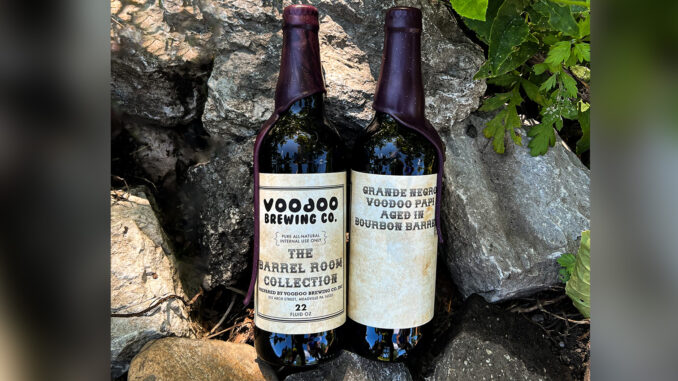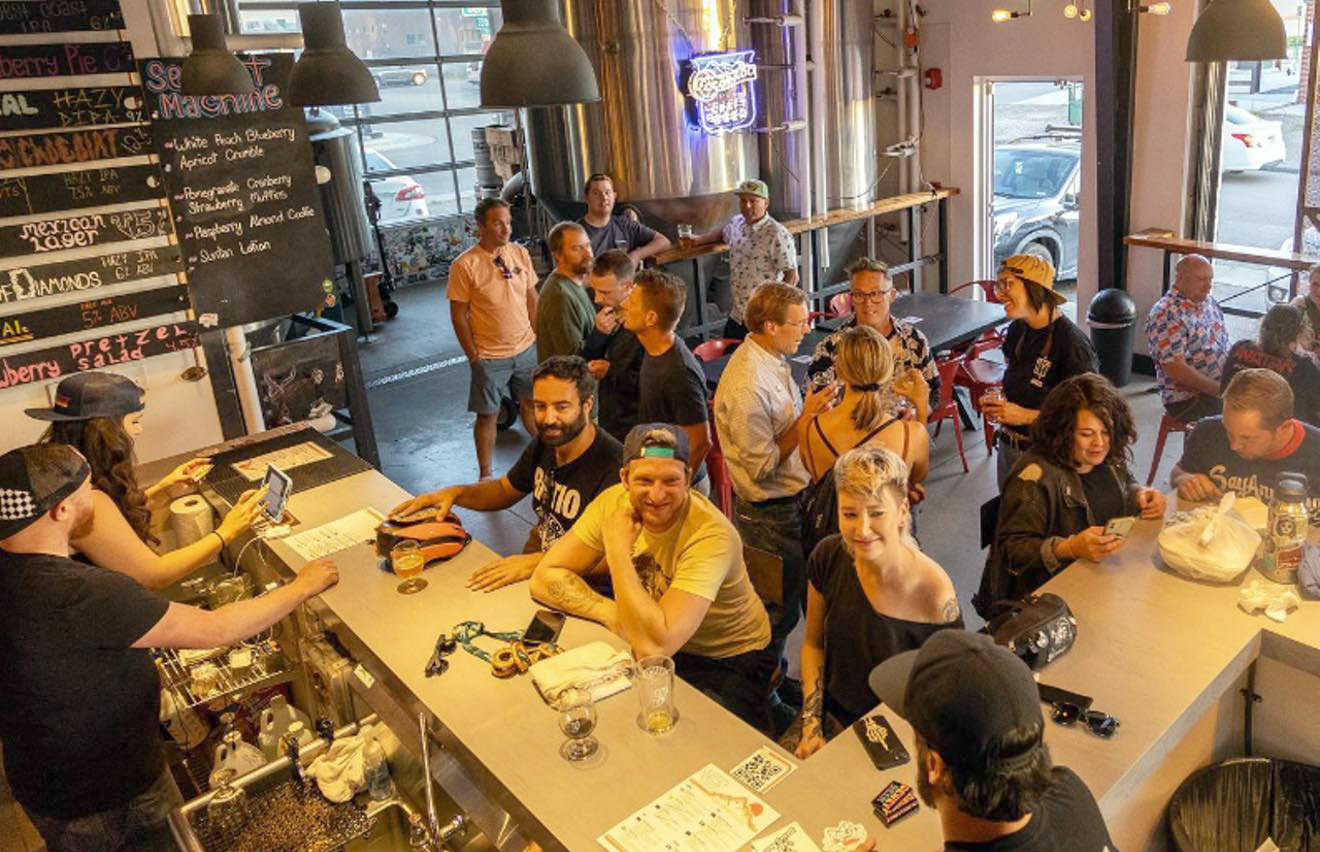
Grande Negro Voodoo Papi has become more than a standout release in Voodoo Brewing Company’s Barrel Room Collection; instead, it has been a proving ground for the company’s innovation, brand discipline, and consumer connection.
For Chief Marketing Officer Tom Guzick, the beer’s evolution reflects not just the maturation of the barrels, but also the maturation of the strategy.
Launched in 2013, Grande Negro Voodoo Papi began as an experiment rooted in curiosity. “Grande Negro Voodoo Papi was originally inspired by our flagship stout, Big Black Voodoo Daddy,” Guzick said. “We wanted to explore how it would evolve with a barrel treatment, but we also wanted to elevate it beyond what people might expect from a traditional barrel-aged stout.” The result blended maple syrup, cocoa nibs, cinnamon, chili peppers, and vanilla into a layered, Mexican-inspired profile that immediately resonated with fans.
Voodoo’s annual release shows that longevity is built on restraint, adaptability, and storytelling as much as on the beer itself.
“Grande Negro Voodoo Papi became a benchmark for us in proving that a careful, thoughtful approach to barrel aging could stand out in a crowded field,” Guzick said.
The first batch, aged in Laird’s Apple Brandy barrels, created a surge of attention that set the tone for what would follow. Guzick recalled that 2013 release as “the moment when everything clicked.”
Each subsequent year brought a new test of creativity and patience: Buffalo Trace barrels in 2016, Four Roses and Heaven Hill in 2017, whiskey tawny port, and Cabernet barrels in 2018, and extended aging in maple syrup bourbon barrels by 2019. Recent releases have pushed the limits even further, with the 2024 edition resting for over 42 months in 13-year-old Old Forester bourbon barrels.
That patience and willingness to experiment have become central to the brewery’s identity.
“This beer has always been a way for us to push the boundaries of what barrel aging can be,” Guzick said. “We experiment with extended aging, unique barrel types, and adjuncts that are more nuanced rather than over-the-top.”
The success of Grande Negro Voodoo Papi helped prove that subtlety, when guided by precision and intention, can stand out in a field often defined by intensity.
While the beer’s production remains small, its impact extends beyond numbers.
“In terms of overall sales, The Barrel Room Collection beers are not a large portion of our business,” Guzick said. “For us, its success is measured through consumer feedback and the level of excitement it generates with every release.”
By prioritizing anticipation and community engagement over volume, Voodoo looked to build a release culture that sustains enthusiasm year after year. That engagement strategy has evolved along with the brand. Early on, the brewery sold Barrel Room beers in curated sets of five or six, then shifted to limited single-bottle drops to cultivate a sense of exclusivity. When the pandemic disrupted in-person events, Voodoo pivoted again.
“We moved to a lottery system to keep things fair,” Guzick said. “More recently, we’ve transitioned to Oznr, offering releases on a first-come, first-served basis with a proxy option.” Each stage of that evolution refined how scarcity and access were balanced and underscored the importance of adapting quickly without diluting the brand’s mystique.
Despite steady demand, Guzick said the brewery never aimed to scale Grande Negro Voodoo Papi beyond its natural footprint. Overexpansion, he noted, once created challenges.
“There was a time when we were filling barrels at twice the rate we were emptying them,” he said. “That left us with a sizable barrel stock, and when the pandemic hit, it disrupted the timing of our releases.”
The result was a brief period of oversaturation, which Voodoo corrected by pacing its releases and rebuilding scarcity.
READ MORE: Tips for Bourbon Barrel Aging
Even the packaging reflects strategic restraint. The wax-dipped bottles and label design have remained largely unchanged since the first release.
“We made slight updates to the labels, but intentionally stayed true to the design from the original 2013 release to preserve that connection to the beer’s roots,” Guzick said. That consistency helped anchor the brand’s identity even as the beer evolved internally.
For other breweries, Voodoo’s approach offers a case study in
The long-term brand cultivation shows that Grande Negro Voodoo Papi wasn’t designed as a quick win for the brand. It was built on experimentation, patience, and a clear sense of what success meant beyond sales.
“Hearing directly from fans about how much they look forward to this beer each year is more valuable to us than sales figures alone,” Guzick said.







Be the first to comment